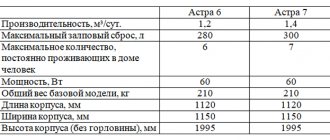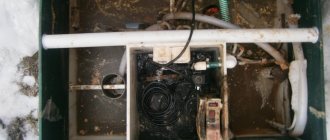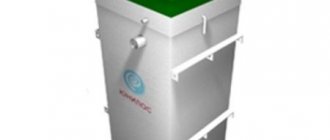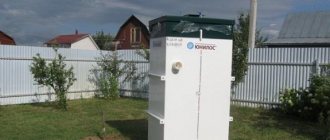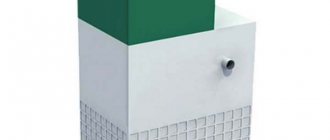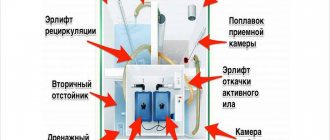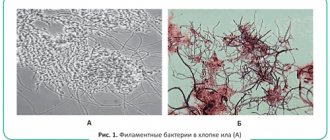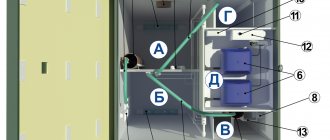Manufacturer of septic tanks Astra and Topas. Brand. Story.
| Brand | UNILOS Astra | Topas/Topas-S |
| Year of creation of the septic tank | 2002 - Astra | 1995 - Topas in Europe 2000 - Topas in Russia |
| Septic tank weight | 220 kg (Astra 5) | 280 kg (Topas-S 5) |
| Wall thickness | 15-20 mm | 15 mm |
| Price | 80 000 ₽ | 101,070 ₽ — Topas 5 86,670 ₽ — Topas-S 5 |
| Compressor | Secoh (Japan) Thomas (Germany) | AirMac (Taiwan) |
| Solenoid valve | Mivalt MP-160 (Czech Republic) | no - Topas 5 yes - Topas-S 5 |
| The lineup | from 3 people | from 4 people |
We will start our comparison with the history of the Astra and Topas septic tank brands. The manufacturer of UNILOS Astra septic tanks is; septic tanks are produced at a plant in the Moscow region, after which they are delivered to the manufacturer’s warehouse in St. Petersburg. SBM-Baltika operates throughout Russia, so you can buy an Astra septic tank in any major city in Russia. The first septic tanks were constructed in 2002, since then they have been successfully sold throughout Russia and St. Petersburg. At their core, Astra septic tanks are the Russian analogue of Topas septic tanks, adapted for the Russian market. The manufacturer of septic tanks is Topas.
The first Topas septic tanks were invented in 1995 by Czech engineer Jan Topal; in 2000, Topas septic tanks began to be sold in Russia. Septic tank Topas separated from its creator, Jan Topal, and is now an independent product. Astra and Topas are two of the strongest brands on the Russian market in the field of autonomous suburban sewerage; they have their own pros and cons, which we will analyze in detail.
What do Astra and Topas septic tanks have in common?
Let's start the comparison by describing what the Astra and Topas septic tanks have in common. Both of these septic tanks are similar to each other, since one is made on the basis of the other. We will carry out further comparisons based on the two most popular septic tanks - Astra 5 and Topas 5. The body of these septic tanks is a parallelepiped. The weight of septic tanks is comparable (220 kg for Astra and 230 kg for Topas). The principle of operation is also similar: when wastewater does not enter the station, water ferments in a circle in 4 chambers; when wastewater enters the septic tank, clean water is drained from the finishing chamber. The degree of purification in septic tanks is comparable, both according to the manufacturer’s statements (up to 98%) and according to our experience - the water is clear and odorless.
Common features
The Unilos Astra and Topas installations use the same cleaning principle - organic inclusions are decomposed by special bacteria under conditions of forced oxygen supply. At the second stage, another method is used - mechanical settling.
In fact, the main work in these stations is performed by air, which is pumped by compressors. Air passing through the aerators helps to mix the wastewater with activated sludge, and also provides normal conditions for the life of bacteria. In addition, air powers the airlifts used to move liquids between chambers.
Switching modes in the station is carried out automatically; for this, the receiving chamber is equipped with float sensors. Both station models have a body made of polymer materials, so they are not afraid of corrosion.
The level of quality of wastewater treatment is approximately the same - 96-98%; additional treatment of the discharged liquid is not required. The advantages inherent in both models include:
- no noise during operation;
- absence of unpleasant odors;
- Possibility of use year-round or seasonally (for seasonal use, preservation is required before stopping);
- simple maintenance, no sewerage equipment required;
- the stations are energy dependent, but consume energy sparingly;
- installation of the plants is possible under almost any conditions on the site; the stations are not demanding on the type of soil.
Differences between Astra and Topas septic tanks. Advantages and disadvantages.
Compressor of Astra and Topas. Solenoid valve.
The main difference between the Astra septic tank and Topas is that the Astra septic tank has 1 compressor and solenoid valve, while the Topas septic tank has 2 compressors that operate alternately.
It also released a septic tank - an analogue of the Astra septic tank, Topas-S. Topas-S also has 1 compressor and solenoid valve. In the Astra septic tank, the compressor operates on a constant basis, the solenoid valve operates in two modes, forward and reverse. If you have voltage surges on your site (5% of sites have voltage surges), then you need to install a voltage stabilizer for the septic tank (its cost is 3,000 - 5,000 rubles). The same applies to the Topas-S septic tank.
The classic Topas septic tank has 2 compressors that operate alternately. First the first compressor works, then the second and so on. Frequent switching on and off of compressors greatly affects their service life; they wear out faster.
The Astra septic tank has a compressor from Secoh (Japan) and Thomas (Germany), while the Topas and Topas-S septic tanks have AirMac compressors (Taiwan). Of course, the service life of Japanese and German compressors is longer than that of their Taiwanese counterpart, since the quality of assembly and components is better and the operating mode is more gentle.
Price of septic tanks Astra and Topas. Cost comparison.
One of the main advantages of the Astra septic tank over the Topas septic tank is the price.
If we compare the difference in the cost of the Astra 5 (80,000 rubles) and Topas 5 (101,070 rubles) septic tank, then it is almost 25,000 rubles, which is 1/4 of the cost of the entire septic tank! Agree, the money is not small; for this cost you can carry out a full turnkey installation of a septic tank. Moreover, the stations have the same operating principle and the same result (the degree of sewage treatment is 98%). So why pay more for the same thing? Obviously, an additional compressor does not cost 25,000 rubles. If we compare the cost of the septic tank Astra 5 (80,000 rubles) and Topas-S 5 (86,670 rubles), where the difference is about 10,000 rubles, then the question also arises, why pay more? Moreover, the water purification technology with 1 compressor and solenoid valve appeared in Astra septic tanks much earlier than in Topas-S septic tanks.
If we talk about comparing the cost of Astra and Topas septic tanks, then Astra septic tanks have a clear advantage.
Model range of septic tanks Astra and Topas
The Astra septic tank model range begins with a model designed for 3 people. Septic tank Astra 3 is bought by those families who live in a dacha consisting of 2-3 people, and this is 30% of all septic tanks that are bought in St. Petersburg and the Leningrad region (the remaining 70% are septic tanks designed for 4, 5 -ty and 8 people). The model range of Topas and Topas-S septic tanks begins with a model designed for 4 people - Topas-S 4. If 2-3 people live in a house, then it is not advisable for such a family to buy a septic tank designed for 4 people. Therefore, in this situation, there is only one choice: the Astra 3 septic tank. Therefore, in terms of the model range, the Astra septic tank has a clear advantage.
Principle of operation
Both models use a single cleaning method, the process proceeds as follows:
- The wastewater settles in the receiving chamber, freeing itself from the largest and non-degradable inclusions.
- Once in the aeration tank, the liquid undergoes biological treatment under conditions of forced air supply. Thanks to the supply of oxygen and active mixing of the liquid, cleaning occurs as quickly and completely as possible.
- Next, the liquid settles again, at which time activated sludge particles precipitate.
Positive features of models
The use of both described models has the following advantages:
- the highest degree of purification – 96-99%;
- complete absence of odors in the area;
- versatility, septic tanks can be installed in any conditions;
- ease of use - the models operate automatically and do not require constant attention.
Negative points
There are also negative features in using the described treatment plants:
- both septic tanks are energy-dependent;
- models require regular maintenance - cleaning should be done quarterly.
Performance
One of the most important characteristics of a septic tank is the performance of the installation. If you select this parameter incorrectly, the station will not be able to operate efficiently.
In private construction, as a rule, low-capacity stations are used. The Astra line of models includes septic tanks designed to serve facilities with 3, 5, 8, 10 or more users.
Until recently, the least productive station of the Topas brand was an installation for serving five users. However, since there is a great demand for low-performance stations, the company has launched a more compact installation - Topas 4, which is suitable for servicing a house with 3-4 people.
Thus, septic tanks of both brands are presented in a wide range of performance and for any facility you can choose an installation that is ideally suited in terms of performance.
Comparison of septic tanks Astra and Topas, summing up
Septic tanks Astra and Topas are identical, and in many ways repeat each other, with the exception of a few points.
The Astra and Topas-S septic tanks have 1 compressor and solenoid valve, and the Topas septic tanks have 2 compressors. This has its pros and cons, which were described above. In terms of price and choice of model range, the Astra septic tank has a clear advantage. If you want a septic tank like your neighbor’s, then buy an Astra or Topas septic tank (in 70% of cases, these are the septic tanks that are installed on suburban areas), depending on what your neighbors have and whether they are happy. If you just want a good septic tank and don’t want to overpay, but at the same time get the best quality sewage treatment, then this is definitely Astra septic tanks.
This article is constantly updated and added to; we monitor current changes in both the design of septic tanks and pricing policy!
We recommend viewing
Comparison of septic tanks Astra and BioDeka
4 rules for choosing a septic tank for your home
Work of septic tank Astra, Topas in winter
What are the differences?
Despite the fact that both Topas and Unilos Astra use a similar cleaning method (biological), these models also have significant differences.
Electrical part
You can see these differences immediately as soon as the lid is removed from the septic tank. The compressor compartment of the Topas septic tank is significantly larger than the similar compartment in the Astra installation.
Advice! The large size of the compressor compartment creates certain, but, of course, non-critical difficulties when servicing the installation.
The fact is that Topas uses two compressors at once, while the operation of the Astra installation is controlled by a single unit. A pair of compressors installed in the Topas station operates alternately, while one ensures a certain cleaning phase, while the second is turned off.
Switching is controlled by a float sensor. In the Astra septic tank, the unit works constantly, since there is only one there. Its operation is controlled by including a solenoid valve in the circuit.
Both options have their downsides. On the one hand, frequent switching on and off of compressors leads to faster wear, so the option with a constantly running unit looks more reliable. On the other hand, the inclusion of an electromagnetic valve in the circuit increases the likelihood of electrical failure.
Advice! To extend the service life of electrical equipment, it is recommended to install a voltage stabilizer when installing both septic tanks. This will protect the electrical part from the negative effects of power surges.
Possibility of control
Owners of Astra septic tanks have great opportunities to manage the operation of the installation. The model is equipped with a control panel that allows you to switch modes manually.
Advice! Before starting to work with the control panel, the consumer is recommended to carefully study the instructions.
But owners of Topas septic tanks only have the ability to turn the septic tank on and off. There is no provision for manual mode switching in this installation.
Possibility of use in difficult conditions
Both Golubaya biotreatment stations can be additionally equipped with equipment for organizing forced pumping of purified water. Therefore, both septic tank models can be installed at high groundwater levels or in clay soils.
It is also possible to connect the supply pipe at a depth greater than that provided for in the standard installation diagram. However, Topas installations have only two versions - basic and long.
But Astra septic tanks are available in three versions - standard, midi and long. Therefore, before making a choice in favor of one installation or another, you should draw up a local sewerage diagram linked to a given area so that you can determine the optimal depth for laying the pipes.
Let's define the concepts
In this article we will talk specifically about autonomous sewerage - an energy-dependent installation that purifies wastewater over 98% and processes human waste products with the help of aerobic bacteria that are formed in the station as a result of a constant supply of oxygen.
Such sewers are also called biological treatment ; they are environmentally friendly for humans and the environment. The water from the treatment station comes out clear and odorless - it can be used for washing cars, paths, verandas, watering non-fruit trees and lawns. Such stations are also popularly called septic tanks, although this is not correct, but has firmly taken root in everyday life.
Autonomous sewerage purifies wastewater over 98% and operates for about 50 years.
Many people see an alternative to this sewage system in installing a conventional plastic septic tank, that is, a container with one or several compartments through which wastewater passes, gradually being purified. In fact, there is no alternative here - the wastewater coming out of such a septic tank is purified only up to 40%, has a cloudy color and a putrid odor, since the purification process occurs with the help of anaerobic bacteria.
Such a septic tank implies only partial settling of organic waste at the bottom of each compartment and requires regular pumping with a sewer truck when there is sufficient accumulation of organic waste at the bottom of the compartments. In fact, it is a slightly more advanced analogue of the cesspool, invented at the beginning of the century. With an almost identical cost to an autonomous sewer system due to expensive installation (to prevent the soil from being crushed by a plastic septic tank, concrete is poured, etc.), its disadvantages in the smell like a wooden toilet and the constant damage to flower beds by the wheels of a sewer truck are too obvious.
We think the disadvantages of a cesspool, well, etc. are not worth explaining. A huge pit or well with a lid (or without), which not only emits an odor, but is also extremely unsafe for children. Look how much news there is in Yandex searches about a child drowning in a cesspool.
It remains to be seen how such structures are still allowed to be built. Our company has never installed and does not install equipment that does not comply with GOSTs and safety standards. That is why we are in favor of autonomous sewerage.
Thus, we will immediately discard the septic tank as an option for arranging a sewer system. Next we will talk about the autonomous sewer system of a private house, which will serve you for over 50 years with proper care.
Operating rules
The rules for using and servicing septic tanks of both brands are almost identical. It is prohibited to discharge into septic tanks:
- items that cannot be recycled - fabrics, polymers, diapers, etc.;
- sharp objects - glass fragments, wire scraps;
- caustic substances – solvents, acids, alkalis;
- substances that can cause the death of bacteria - solutions of bleach, potassium permanganate, antibacterial drugs;
- cleaning mushrooms, vegetables, food debris, that is, something that can provoke the growth of mold fungi.
Salvo release
During operation, it is strictly forbidden to exceed the volume of the maximum salvo discharge. This indicator differs for models of different performance. So, for a Topas septic tank with a capacity of 1 cubic meter per day, this figure is 220 liters, and for an Astra installation of the same capacity - 250 liters.
However, in septic tanks with a capacity of 1.6 cubic meters per day, the situation is the opposite. The Topas of this performance has a maximum salvo discharge volume of 90 liters more than the Astra with the same performance characteristics.
So, it is impossible to say unambiguously which model of the Topas or Unilos Astra deep biological treatment station is the best. Both septic tanks have their advantages, but they are not without their disadvantages. Therefore, when choosing, it is worth taking into account the specific conditions in which you plan to operate the purchased station.
Septic tank Topol or Topas: which is better?
These two popular systems have a serious competitor - the Topol septic tank. It works on approximately the same principle. The only difference is that a two-phase airlift is used here. This approach allows you to slightly increase system performance and reduce power consumption. However, this system is a little more expensive.
Again, which option is best is up to you. All of them do an excellent job of their functions and have a positive reputation.
And further. Regardless of the option you choose, there are no problems with maintenance and sewer cleaning if the need arises. The main thing is not to use chemicals that can harm active bacteria. It is better if specialists do this. The specialists of the company Spb.kanalservis.ru will solve any problem, regardless of what kind of septic tank you have.
Comparison of characteristics
A similar structure and technology provide the Topas and Unilos Astra treatment plants with similar operational characteristics.
At the same time, both septic tanks have common advantages:
- the technology used for treatment with active microorganisms allows us to obtain a degree of wastewater treatment at the level of 96-99%;
- the absence of settling tanks in which sediment is compacted makes it unnecessary to use specialized sewage equipment (read about installing shut-off valves on pipelines here) to clean septic tank chambers;
- due to the continuity of the process of anaerobic processing of contaminants, molding and fermentation of contaminants are eliminated (read reviews about bacteria for septic tanks and cesspools in this article), which guarantees the absence of an unpleasant odor in the area when the units are operating normally;
- the movement of liquid between chambers using airlifts made it possible to almost completely abandon the use of electromechanical, primarily pumping equipment (its only representative in the systems is the compressor), which significantly increased the reliability of the installations;
- minimum requirements for the performance of airlifts ensure high efficiency of installations - the power consumption of the most popular devices designed to serve the needs of 5 people does not exceed 100 W;
- the simplicity of the design allows almost all maintenance and repair operations to be performed by the user himself, without the involvement of qualified technical personnel and specialized equipment.
Even externally, the design of the Topas and Unilos Astra septic tanks is practically similar.
Both installations are made in a polymer housing with a rectangular (square) cross-section, intended for vertical installation in the ground.
High-strength plastic is used for the body; the parts are connected using a special welding technology, thanks to which bonds are formed at the molecular level.
This ensures the highest strength of welds. To increase resistance to mechanical stress, septic tank bodies are equipped with stiffeners.
Both stations are similar in other respects:
- require connection to the power supply network;
- require periodic maintenance - when using standard aerolift pumps for pumping out sludge, these operations are performed once every 3-4 months, with drainage (sewage) pumps for pumping out sewage, the frequency can be reduced to once every 6 months;
- To operate in regions with harsh climates, installations require the use of external thermal insulation to maintain the functionality of the units and the strength of the structures.

